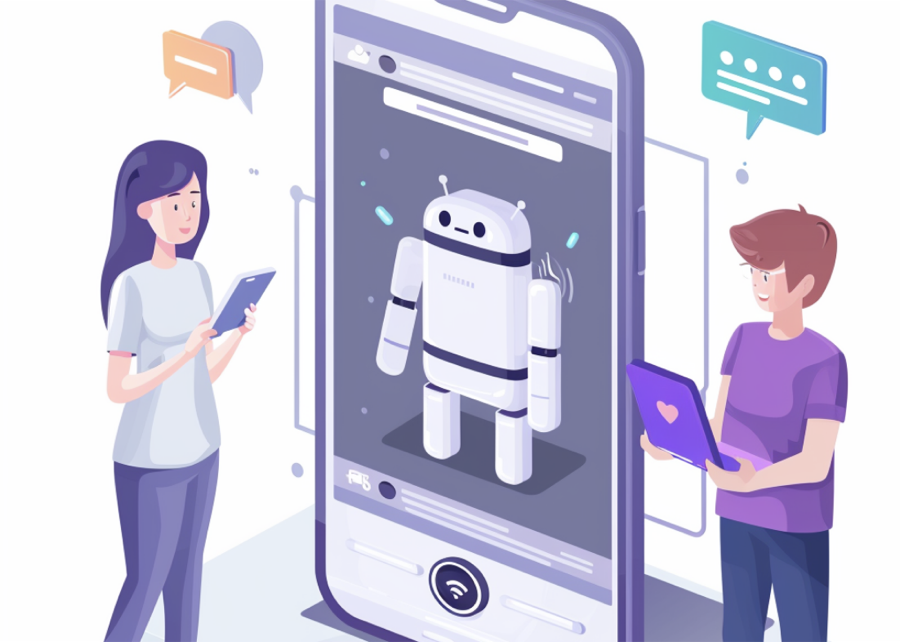Chatbots Vs. Human Customer Service: Striking The Perfect Balance For Your Local Business

Are you struggling to balance chatbots and human customer service in your local business? You’re not alone. Many small business owners grapple with this challenge daily.
AI chatbots are transforming customer service. They handle 80% of routine queries, freeing up human agents for complex issues. This blend of technology and personal touch can boost your customer satisfaction and loyalty.
Here’s how to strike the perfect balance for your business. Ready to transform your customer service?
Key Takeaways
- AI chatbots handle 80% of routine queries, freeing up human agents for complex issues.
- The global chatbot market was £396.2 million in 2019 and may reach £1.95 billion by 2027.
- Klarna’s AI bot does the work of 700 full-time staff, saving time and money.
- 96% of customers value empathy in support interactions, which human agents provide.
- A mix of chatbots for quick answers and human help for complex issues gives the best service.
The Rise of AI Chatbots in Customer Service

AI chatbots have taken customer service by storm. These virtual assistants now handle tasks once done by humans. The global chatbot market hit 5.13 billion in 2022. Experts say it will reach 27.30 billion $ by 2030.
That’s huge growth!
Chatbots offer 24/7 support and speak many languages. They’re fast and efficient. Klarna’s AI bot does the work of 700 full-time staff. That’s a lot of saved time and money! Plus, 51% of customers prefer chatbots for quick help.
Young people expect instant service. AI bots meet this need perfectly.
AI chatbots are revolutionising customer service, offering 24/7 support and handling tasks equivalent to hundreds of human agents.
Efficiency and Scalability of Chatbots
Chatbots provide significant advantages for your business. They operate continuously without interruptions, managing multiple conversations simultaneously. This allows you to assist more customers quickly.
Klarna’s AI assistant performs the tasks of 700 full-time employees. This represents substantial time and cost savings.
You’ll have lower initial expenses for chatbots compared to human staff. They don’t require ongoing salaries or benefits. Moreover, you can easily expand as your business grows. Increase chat capacity without hiring additional personnel.
Yet, it’s worth considering that chatbots consume energy. ChatGPT uses as much electricity as 33,000 households daily. It also requires 700,000 litres of water for training. Weigh the advantages and disadvantages for your business requirements.
The Unique Value of Human Agents
Human agents bring empathy and emotional intelligence to customer service. A study shows 96% of customers value empathy in support interactions. Humans can understand complex issues, offer creative solutions, and build emotional connections.
They excel at handling sensitive situations and providing personalised care.
Agents offer flexibility in problem-solving that AI can’t match. They can think critically, adapt to unique contexts, and make judgement calls. This human touch builds customer loyalty and trust.
For tricky issues or VIP clients, human support remains crucial. Skilled agents provide a level of care and understanding that strengthens your brand image.
Finding the Right Balance Between Chatbots and Human Agents
Blend AI chatbots with human agents for top customer service. Use bots to handle 80% of simple queries. This frees up your staff for complex issues.
That’s huge savings in time and money. But don’t forget the human touch. 51% of customers prefer chatbots for quick answers. Yet they trust human help more overall. Set up a system where bots can quickly pass tricky cases to your team.
This mix gives fast service and keeps the personal feel your clients love.
Seamless Transition Between Bots and Humans

A smooth handoff between chatbots and human agents is key. Your system must know when to pass a chat to a live person. This keeps customers happy and saves time.
Set up clear rules for when bots should transfer chats. Train your staff to pick up smoothly where the bot left off. Use data from past chats to improve this process. Aim for a natural flow that feels like one conversation to the customer.
This blend of AI and human touch can boost your service quality.
Future Trends in AI-Human Collaboration
AI and humans will team up more in future customer service. Smart chatbots will handle simple tasks, freeing up staff for complex issues. You’ll see AI tools that grasp context better, making chats feel more natural.
These tools will work in many languages, helping you reach global markets.
AI will also help your team work smarter. It will spot trends in customer data, helping you make better choices. Your staff will use AI to get quick info, solving problems faster. But don’t worry – humans will still be key.
They’ll add the personal touch that builds lasting customer bonds.
Conclusion
Chatbots and humans each bring unique strengths to customer service. Bots handle routine tasks fast, while people offer empathy and solve complex issues. Your local business can thrive by using both.
Set up bots for quick answers and common questions. Train your staff to step in for tricky problems that need a human touch.
This mix will keep your customers happy and your business running smoothly.
FAQs
1. How can chatbots improve customer experience?
Chatbots use AI and NLP to offer quick, 24/7 support. They handle basic queries, freeing up humans for complex issues. This speeds up response times and boosts customer satisfaction.
2. What are the pros of human customer service?
Humans excel at empathy, creativity, and handling complex problems. They can read between the lines, offer personalised solutions, and build stronger customer relationships. This personal touch is vital for certain industries.
3. How can local businesses blend chatbots and human support?
Use chatbots for initial contact, FAQs, and simple tasks. Have humans step in for tricky issues or when customers request it. This mix optimises resource use and improves the overall customer journey.
4. Can chatbots handle multiple languages for international markets?
Yes, modern chatbots can communicate in various languages. They use machine learning to improve over time, making them useful for businesses eyeing global expansion or serving diverse local communities.
5. What privacy concerns should businesses address when using chatbots?
Ensure chatbots comply with GDPR and other data laws. Be clear about data collection in your privacy policy. Avoid storing personally identifiable information unless necessary. Always give customers the option to speak to a human.
6. How can businesses measure the success of their customer service strategy?
Track metrics like response times, customer satisfaction scores, and issue resolution rates. Use sentiment analysis on customer feedback. Monitor your website’s bounce rate and social media engagement. These insights help refine your approach.